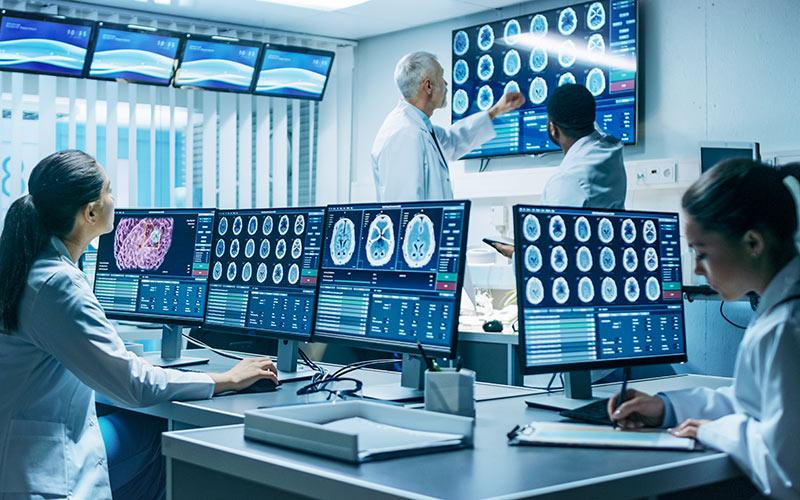Reform of nuclear medicine: what you need to know before June 1, 2023
By Nathalie Boudet-Gizardin, partner and Linah Bonneville, intern
We alerted you to an article from April 6, 2022 on the changes announced by the reform of nuclear medicine.
As a reminder, this reform will come into force from 1 June 2023 and the 2023-2028 regional health plans, which will take these new provisions into account, must be published by November 1, 2023 at the latest.
In line with the decrees of December 30, 2021 and February 1, 2022, and the decree of February 1, 2022, an instruction relating to the activity of nuclear medicine care was published on December 19, 2022.
This instruction describes and specifies the procedures for implementing the provisions applicable to the new nuclear medicine care activity.
REMINDER OF THE GRADATION OF ACTIVITY INTO TWO LEVELS AND ITS CONSEQUENCES
The instruction recalls that the use of radiopharmaceuticals (MRP) in the context of nuclear medicine activity entails specific constraints of use and that a gradation in two levels of nuclear medicine activity (mention A or B) was introduced by the reform.
The instruction specifies that this gradation is proportionate to the level of risk of the use of the MRP used for diagnostic examinations and for the treatment of benign and malignant pathologies, and correlated with appropriate radiopharmaceutical control.
The instruction also provides details on securing the circuit of radiopharmaceuticals by specifying the different composition of the teams working on each site marked A or B, and the contractualization requirements in this area.
CLARIFICATIONS CONCERNING THE QUALITY ASSURANCE OBLIGATION AT THE RESPONSIBILITY OF THE AUTHORIZATION HOLDER
The instruction recalls that the holder of the authorization is subject to the quality assurance obligation defined in I of article L. 1333-19 of the CSP since the justification of the choice of the procedure, the optimization doses delivered to patients until the result of this act is rendered.
As such, it must implement the following actions:
- A report on the quality controls for medical devices provided for in article R. 5212-25 of the CSP;
- A statement of the recording and analysis of events that may lead to accidental or unintentional exposure of people to ionizing radiation and serious adverse events associated with the care mentioned respectively in Articles L. 1333-13 and L. 1413 -14 of the CSP;
- Clinical audits carried out by peers.
In addition, the authorization holder must ensure that the sites of mention A and B must have equipment connected to an image archiving and sharing system (PACS) as well as a dose archiving and analysis system.
FOCUS ON THE PROCEDURES FOR OBTAINING THE INITIAL AUTHORIZATION AND ITS UPDATE
Initial authorization
The instruction recalls that an installation with mention A or B must be available for the holder to file his authorization application file during the opening period of the filing window opened by the ARS. This authorization is now issued by geographical site.
If the initial authorization is issued for a set of up to 3 pieces of equipment, the authorization holder must have at least one PET or SPECT on the day of the authorization submission request. If he only has one of the two pieces of equipment, an agreement, which will be attached to the file, must be established with another holder who has the missing equipment. If the holder has the equipment on another site, an agreement is not necessary, however the organization between the two sites will be described in the application file.
Initial Authorization Update
The steps to be taken are as follows:
- From 1 to 3 pieces of equipment (base plate):
Must be the subject of a simple declaration to the ARS:
- Adding new equipment;
- Replacement with equipment of the same nature;
- The replacement of equipment by equipment of a different nature.
- From 4 to 9 equipment (which corresponds to the maximum number of equipment that an authorization holder can hold on a geographical site):
Must be the subject of an amendment to the initial authorization1 and an assessment by the Director General of the ARS who decides whether or not the modification calls for a new decision:
- Adding new equipment;
- Replacement with equipment of the same nature;
- The replacement of equipment with equipment of a different nature;
For the addition of equipment above the threshold (from 4 to 9 EML), the holder must justify his request. The DG of the ARS may authorize the said holder if the volume of acts, the specialization of the activity or the territorial situation justify it.
WHAT ABOUT THE EML AUTHORIZATIONS ALREADY OBTAINED?
When we published our previous article, we pointed out:
- that the reform did not provide for the automatic transfer of an authorization from EML already awarded to a holder into an authorization for care;
- that the holders of the EML authorizations currently in force therefore had no guarantee that they would continue after the filing of a new application for authorization for a care activity. They only had the certainty of continuing to use their EML authorizations until a decision was taken on their new application for authorization for a care activity to be submitted during the first submission window opened after publication. of the regional health plan.
These two points are confirmed by the instruction of December 19, 2022.
This specifies that the current TEP and SPECT authorizations will be extended until the decision of the ARS on the new application to be filed during the first filing window opened after the publication of the SRS 2023-2028.
All of the current license holders of " Scintillation camera with or without coincidence positron emission detector, emission tomograph, positron camera » must, during this first filing window, request a new authorization for the nuclear medicine activity, mention A or B. If these holders do not submit a new authorization application file, their authorizations will expire. de facto on the date following the expiry of the first window for filing nuclear medicine licences.
For the sake of simplification, the instruction also specifies that the DGOS is currently finalizing a single dematerialized authorization application file, common to all the ARS. This file will be adapted according to two situations: applicants who wish to continue their activity and applicants who create a nuclear medicine activity ex nihilo.
WHICH STRUCTURES CAN HOLD NUCLEAR MEDICINE AUTHORIZATIONS?
In our previous article, we alerted the current holders of gamma-camera and PET authorizations, structured in GCS of means, GIE or SCM, on the need to reorganize their activity by opting for a legal structure authorized to receive an authorization. care activity.
Indeed, during the preparation of the reform, it had been identified that these legal persons whose object is the pooling of the equipment necessary for the exercise of the activity of their members could not carry authorizations of care activities.
This point was confirmed by the instruction of December 19, 2022 in these terms:
"Professionals who carry out their activity thanks to the means pooled within the framework of SCM, GIE or GCS of means will therefore have to, if they wish to continue to carry out their activity by sharing the equipment, regroup under a new form of legal structure. authorized to receive a care activity (e.g.: private practice company [SEL], private practice company with limited liability [SELARL], GCS health establishment, professional civil society [SCP])”
The ministerial instruction of December 19, 2022 thus included practice companies (SCP, SEL and SELARL) among the legal persons likely to hold a care activity authorization, even though the corporate purpose of these companies exercise is limited to " joint practice of the profession », which is necessarily more restrictive than the operation of a care activity.
The instruction also does not provide any details on the other forms of SEL or on the cooperative societies of doctors. The question of commercial companies is also avoided, which is regrettable.
- When the holder of the authorization intends to modify the conditions of execution of the authorization for a care activity or heavy material equipment, he informs the director general of the regional health agency thereof.

Nathalie Boudet-Gizardin
Partner
She joined the firm the same year in the Civil and Health team of Catherine Paley-Vincent. She advises health professionals particularly in terms of:
Civil, disciplinary and criminal defense of health professionals, professional orders and medical and veterinary biology laboratories
Advice and assistance for health professionals to structure their activities, including in the context of public/private cooperation, particularly in medical imaging.





